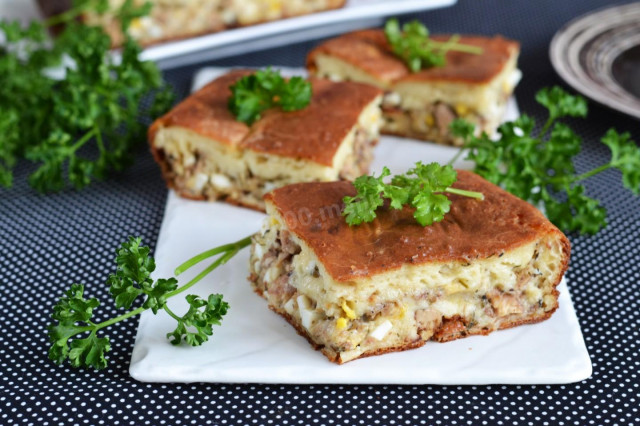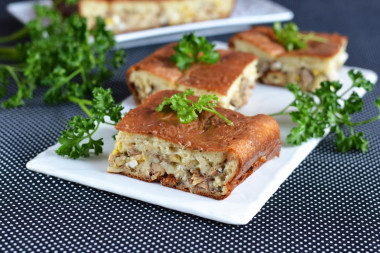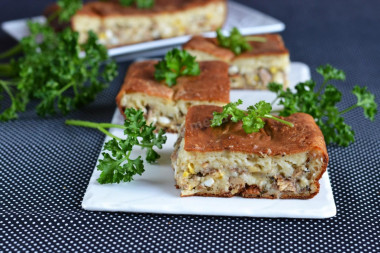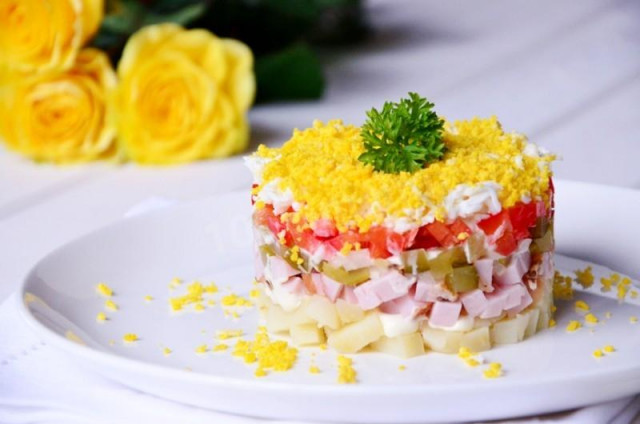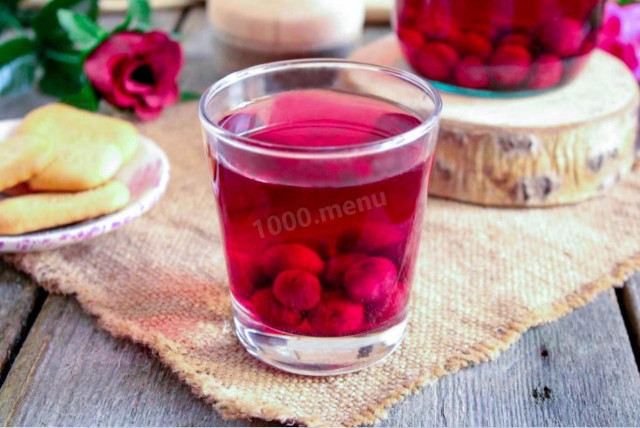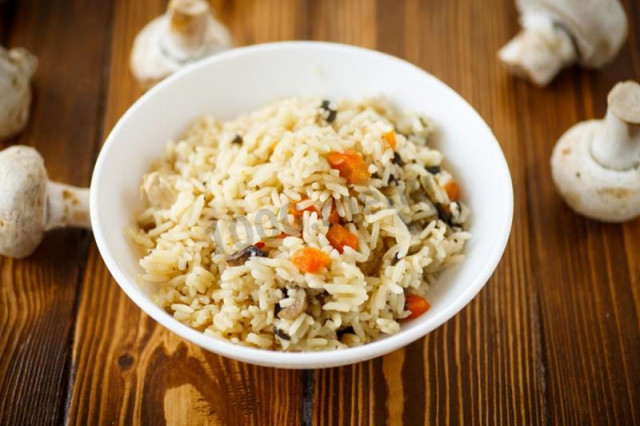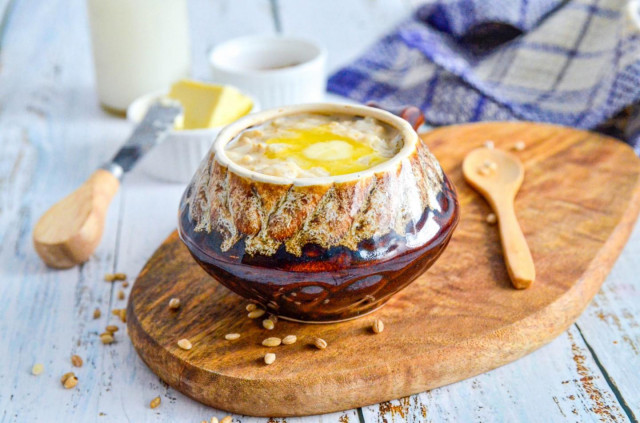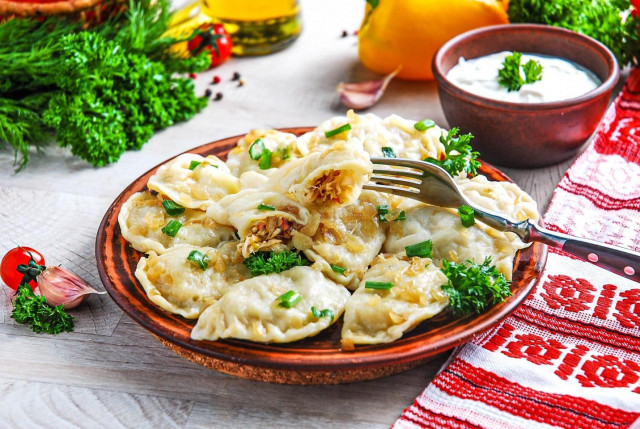Composition / ingredients
Step-by-step cooking
Step 1:
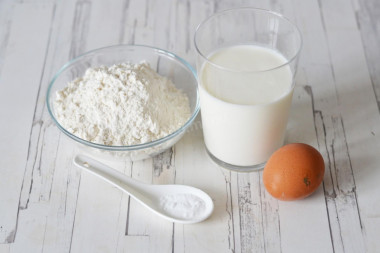
Prepare all the necessary ingredients for the aspic dough. Kefir and egg should be at room temperature, so take them out of the refrigerator in advance (about 1 hour). Use flour of the highest grade.
Step 2:
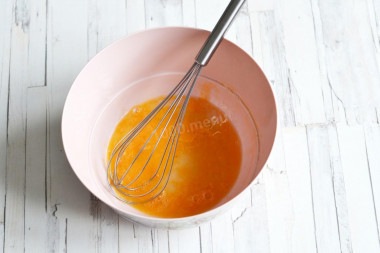
Combine the egg with salt and rub with a whisk until smooth. The protein should connect with the yolk.
Step 3:
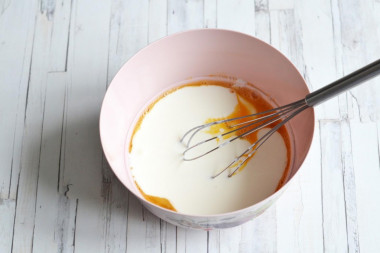
Pour kefir (3.2% fat content) at room temperature and mix the mixture until smooth.
Step 4:
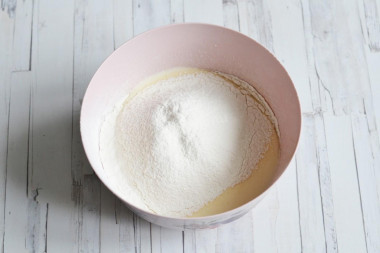
Pour in the flour sifted with soda and mix. You should get a semi-viscous, flowing dough. If the dough turns out to be too viscous, add more kefir or milk to it. But add a little - 1-2 tbsp. l. Then mix, look at the consistency and, if necessary, add more. Because if you pour a lot, the dough will be very thin and it will have to be supplemented with flour.
Step 5:
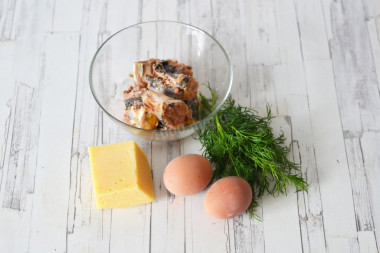
Prepare all the necessary ingredients for the filling. You can use any canned fish to taste: it can be saury, sardine, mackerel, pink salmon. Need a 250 g jar.
Step 6:
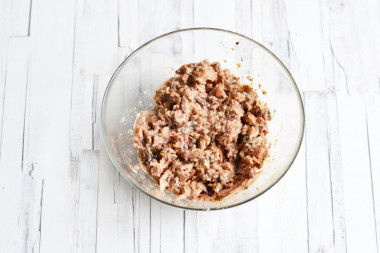
Mash the canned fish together with the liquid with a fork. If there are large bones or a ridge in the fish, remove them.
Step 7:

Grate the cheese on a coarse grater. Use the cheese that melts easily and tastes good.
Step 8:

Pre-hard-boiled eggs, cool, peel and finely chop.
Step 9:
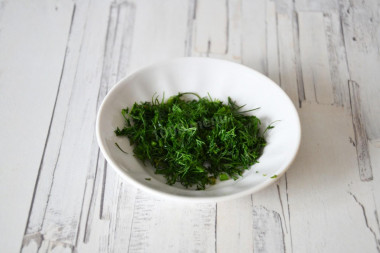
Rinse the dill with cold water, shake it off and chop it finely. In addition to dill, you can use any other herbs to taste: parsley, cilantro.
Step 10:

In a bowl, combine canned fish, boiled eggs, grated cheese and herbs.
Step 11:
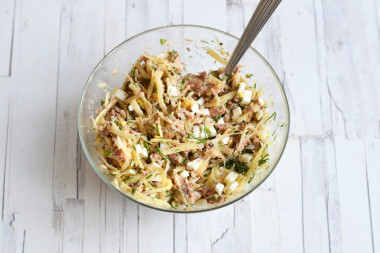
Mix everything thoroughly.
Step 12:
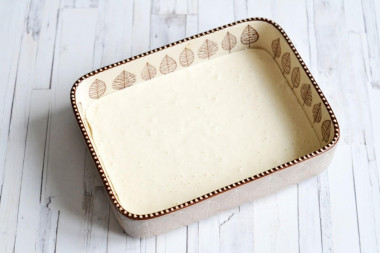
Grease the baking dish (my size is 24 * 18 cm) with vegetable oil. Pour half of the dough into the mold and smooth it out. Properly prepared dough spreads itself in shape.
Step 13:
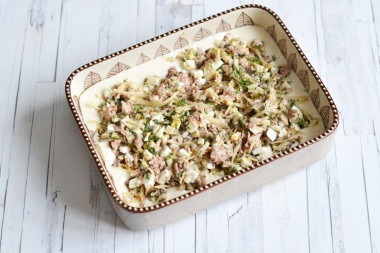
Spread the filling evenly over the dough, not reaching the edges a little.
Step 14:

Carefully pour the remaining dough onto the filling. Place the pie in a preheated 180 ° C oven for about 30 minutes. The exact time depends on the characteristics of your oven and the size of the baking dish - if the form is small, then the layer of dough in it will be thicker and, accordingly, will bake longer. If the shape is wide, then the dough layer will be slightly thinner and baked faster. So watch your pie.
Step 15:
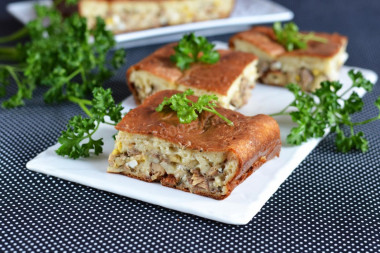
The top of the pie should turn red. Bon appetit!
--------------------
Be prepared for the fact that flour may need a little more or, conversely, less than indicated in the recipe. You need to focus on how the dough should turn out (dense, soft, liquid, etc.). There is a lot of useful information about why flour, even of the same variety, can have completely different properties,
read this article
.
Keep in mind that everyone's ovens are different. The temperature and cooking time may differ from those specified in the recipe. To make any baked dish turn out successfully, use the useful information in the article about ovens here .
Caloric content of the products possible in the composition of the dish
- Chicken egg - 157 kcal/100g
- Egg white - 45 kcal/100g
- Egg powder - 542 kcal/100g
- Egg yolk - 352 kcal/100g
- Ostrich egg - 118 kcal/100g
- Dutch cheese - 352 kcal/100g
- Swiss cheese - 335 kcal/100g
- Russian cheese - 366 kcal/100g
- Kostroma cheese - 345 kcal/100g
- Yaroslavsky cheese - 361 kcal/100g
- Altai cheese 50% fat content - 356 kcal/100g
- Soviet cheese - 400 kcal/100g
- Cheese "steppe" - 362 kcal/100g
- Uglich cheese - 347 kcal/100g
- Poshekhonsky cheese - 350 kcal/100g
- Lambert cheese - 377 kcal/100g
- Appnzeller cheese with 50% fat content - 400 kcal/100g
- Chester cheese with 50% fat content - 363 kcal/100g
- Edamer cheese with 40% fat content - 340 kcal/100g
- Cheese with mushrooms of 50% fat content - 395 kcal/100g
- Emmental cheese with 45% fat content - 420 kcal/100g
- Gouda cheese with 45% fat content - 356 kcal/100g
- Aiadeus cheese - 364 kcal/100g
- Dom blanc cheese (semi-hard) - 360 kcal/100g
- Lo spalmino cheese - 61 kcal/100g
- Cheese "etorki" (sheep, hard) - 401 kcal/100g
- White cheese - 100 kcal/100g
- Fat yellow cheese - 260 kcal/100g
- Altai cheese - 355 kcal/100g
- Kaunas cheese - 355 kcal/100g
- Latvian cheese - 316 kcal/100g
- Limburger cheese - 327 kcal/100g
- Lithuanian cheese - 250 kcal/100g
- Lake cheese - 350 kcal/100g
- Gruyere cheese - 396 kcal/100g
- Dill greens - 38 kcal/100g
- Whole durum wheat flour fortified - 333 kcal/100g
- Whole durum wheat flour, universal - 364 kcal/100g
- Flour krupchatka - 348 kcal/100g
- Flour - 325 kcal/100g
- Kefir fat - 62 kcal/100g
- Kefir of 1% fat content - 38 kcal/100g
- Low-fat kefir - 30 kcal/100g
- Kefir "doctor beefy" 1,8% fat content - 45 kcal/100g
- Kefir 2.5% fat content - 53 kcal/100g
- Salt - 0 kcal/100g
- Saury blanched in oil - 283 kcal/100g
- Atlantic sardine with added oil - 238 kcal/100g
- Sardine in oil - 221 kcal/100g
- Sardine in tomato sauce - 162 kcal/100g
- Mackerel in oil - 278 kcal/100g
- Sprat in tomato sauce - 154 kcal/100g
- Baking soda - 0 kcal/100g

